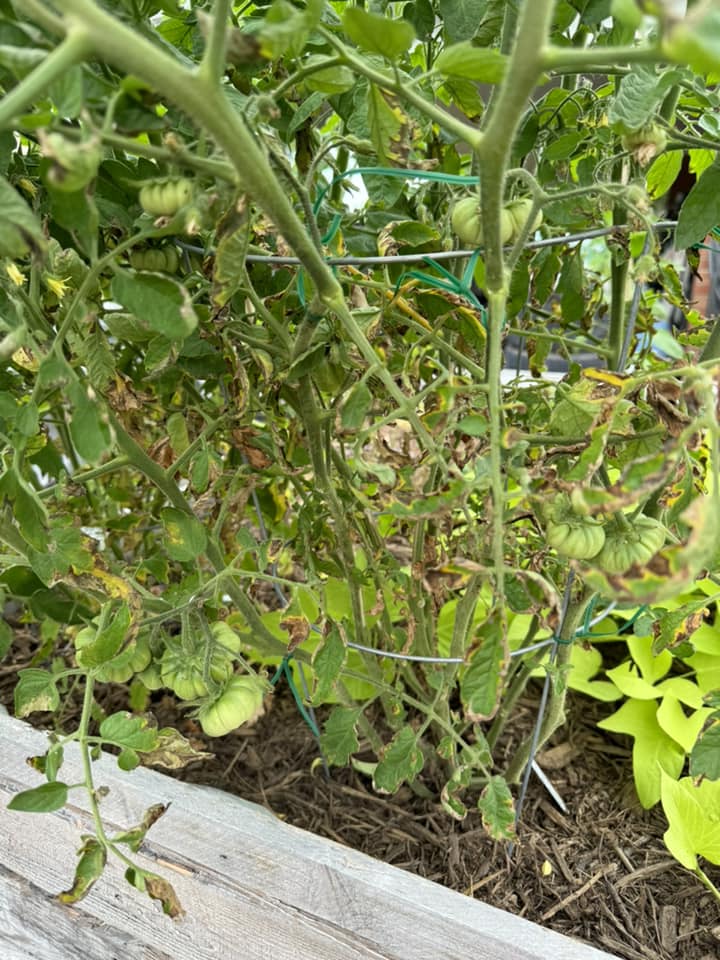
Every gardener knows the joy of watching their tomato plants flourish, but even the most seasoned green thumbs can face challenges. Whether your tomato plant is wilting, showing signs of disease, or struggling with pests, the good news is that most issues can be resolved with a bit of knowledge and care. In this guide, we’ll explore practical and effective strategies for rescuing your tomato plant from a variety of common problems. With these tips, you can quickly get your plant back on track and ensure a bountiful harvest.
Understanding Tomato Plant Troubles
Common Issues That Affect Tomato Plants
Tomato plants can suffer from a range of problems, each with its own set of symptoms and solutions. Here are some of the most frequent issues:
- Wilted Leaves: Often a sign of inadequate watering or root issues.
- Yellowing Leaves: Can indicate nutrient deficiencies or overwatering.
- Brown Spots: Might be a sign of disease or pest damage.
- Leggy Growth: Usually caused by insufficient light or overcrowding.
Understanding these symptoms is the first step in diagnosing and addressing the problem effectively.
How to Save Your Tomato Plant in No Time
1. Diagnose the Problem
Before you can effectively save your tomato plant, it’s essential to identify the underlying issue. Here’s a step-by-step approach to diagnosing common tomato plant problems:
- Inspect the Leaves: Look for discoloration, spots, or curling. Yellow leaves might point to nutrient deficiencies, while brown spots could indicate diseases like blight.
- Check the Soil: Ensure the soil is well-draining and not too dry or waterlogged. The texture and moisture level can give you clues about watering issues.
- Examine the Roots: Gently dig around the plant to see if the roots are healthy. Brown or mushy roots could suggest root rot or other problems.
2. Addressing Watering Issues
Watering is crucial for tomato plant health, but both under- and over-watering can cause problems. Here’s how to get it right:
- Check Soil Moisture: Stick your finger about an inch into the soil. If it feels dry, it’s time to water. If it’s soggy, hold off on watering until the soil dries out.
- Water Deeply and Consistently: Tomatoes need a steady supply of water to thrive. Water deeply once or twice a week, depending on weather conditions and soil type.
- Use Mulch: Applying a layer of mulch around the base of the plant helps retain moisture and regulate soil temperature.
3. Managing Nutrient Deficiencies
Tomatoes are heavy feeders and need a balanced supply of nutrients to grow and produce fruit. Common deficiencies include:
- Nitrogen Deficiency: Yellowing of older leaves can indicate a lack of nitrogen. Fertilize with a balanced fertilizer high in nitrogen.
- Potassium Deficiency: Dark, curling edges on leaves may point to potassium deficiency. Use a fertilizer rich in potassium or add compost to the soil.
- Calcium Deficiency: Blossom end rot, characterized by dark, sunken spots on the fruit, can result from calcium deficiency. Add lime to the soil or use a calcium-rich fertilizer.
4. Dealing with Pests and Diseases
Tomato plants are susceptible to various pests and diseases. Here’s how to handle them:
- Common Pests: Aphids, spider mites, and tomato hornworms can all damage your plants. Inspect regularly and use insecticidal soap or natural predators to manage infestations.
- Fungal Diseases: Problems like powdery mildew and blight can be treated with fungicides and by improving air circulation around the plant.
- Bacterial Infections: Bacterial wilt and other infections often require removing infected plants and practicing good garden hygiene to prevent spread.
5. Pruning and Training
Proper pruning and training can help your tomato plant grow more robustly and produce more fruit. Follow these tips:
- Remove Suckers: Suckers are small shoots that grow in the leaf axils. Removing them helps the plant focus energy on fruit production.
- Support Your Plants: Use stakes, cages, or trellises to support your tomato plants. This keeps the fruit off the ground and reduces the risk of disease.
- Trim Diseased Leaves: Cut away any leaves or stems that show signs of disease to prevent it from spreading.
6. Enhancing Plant Health
Boosting the overall health of your tomato plant can help it recover more quickly from stress:
- Ensure Adequate Light: Tomatoes need at least 6-8 hours of direct sunlight per day. If natural light is insufficient, consider using grow lights.
- Optimize Soil Conditions: Use well-draining soil enriched with organic matter. Adding compost or aged manure can improve soil fertility and structure.
- Rotate Crops: Avoid planting tomatoes in the same location year after year to reduce the risk of soil-borne diseases.
Conclusion
With the right approach, you can turn around even the most troubled tomato plant. By diagnosing issues accurately, managing watering and nutrition, addressing pests and diseases, and ensuring optimal growing conditions, you’ll be well on your way to a thriving tomato plant. Remember, gardening is as much about learning and adapting as it is about planting and harvesting. With these strategies, you’ll be able to save your tomato plant in no time and enjoy a fruitful and vibrant garden. Happy gardening!
